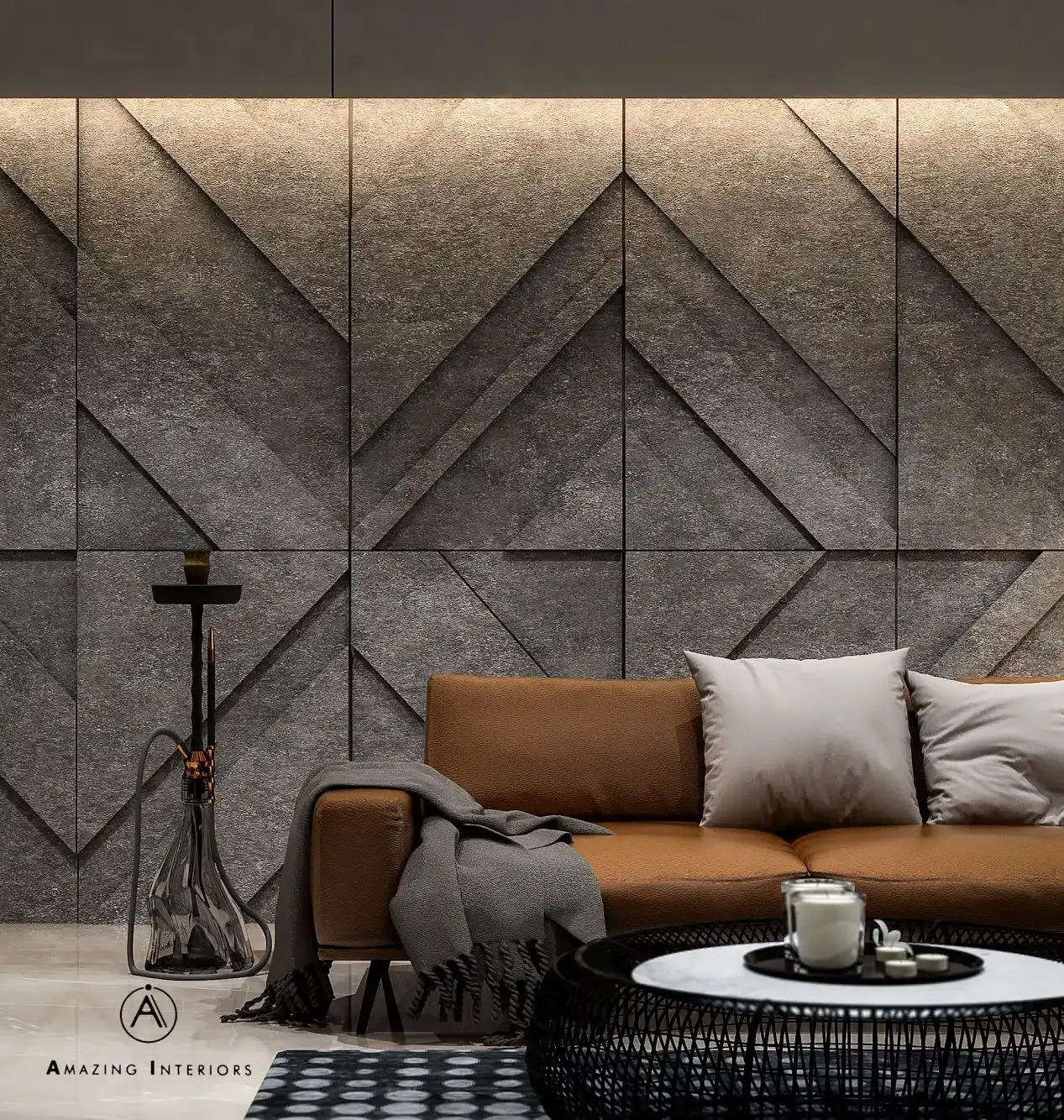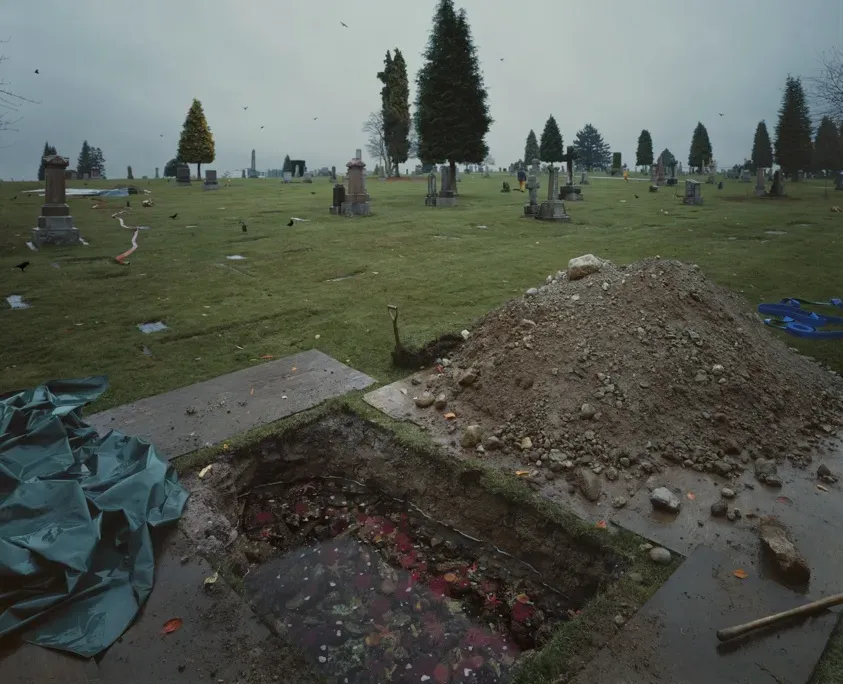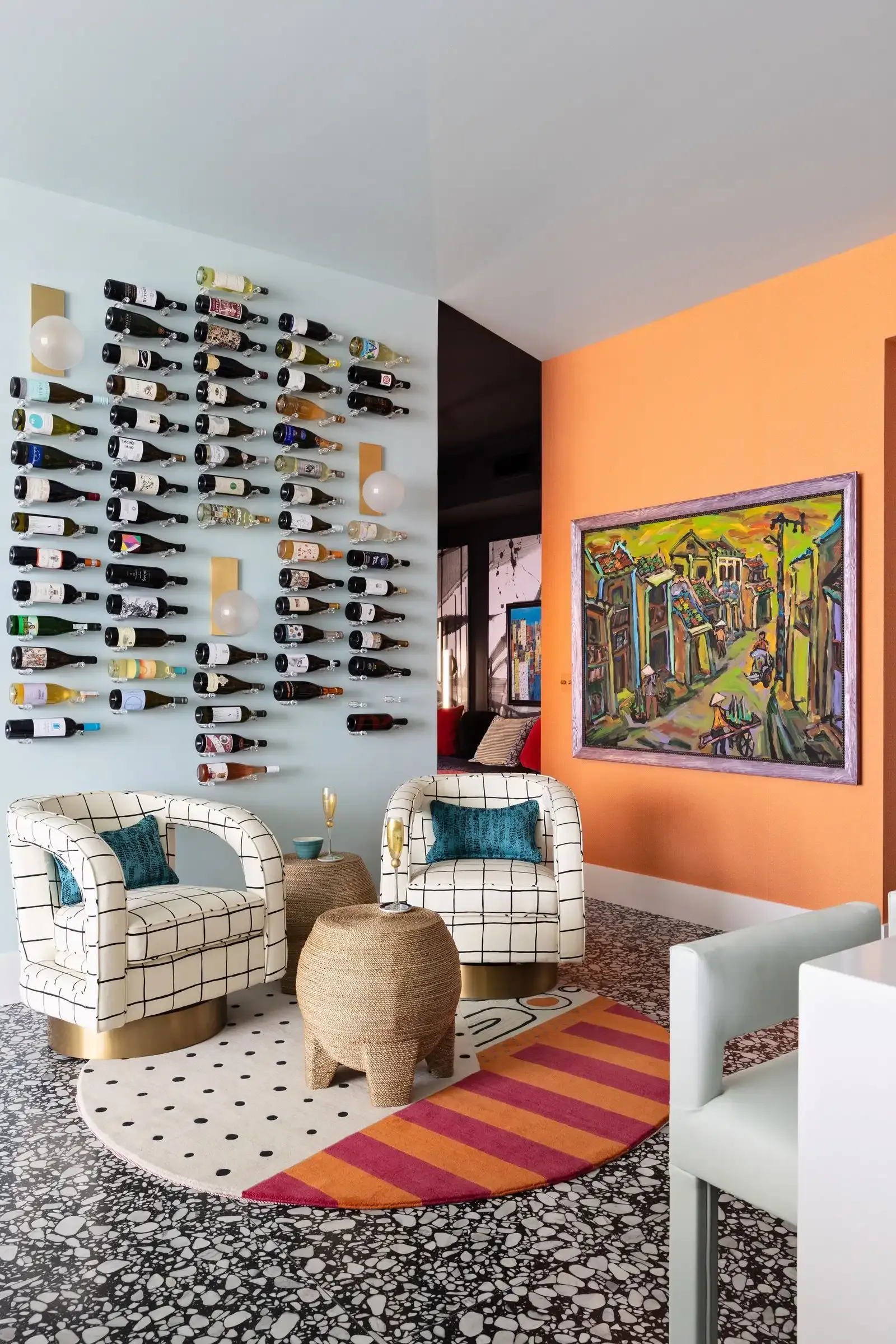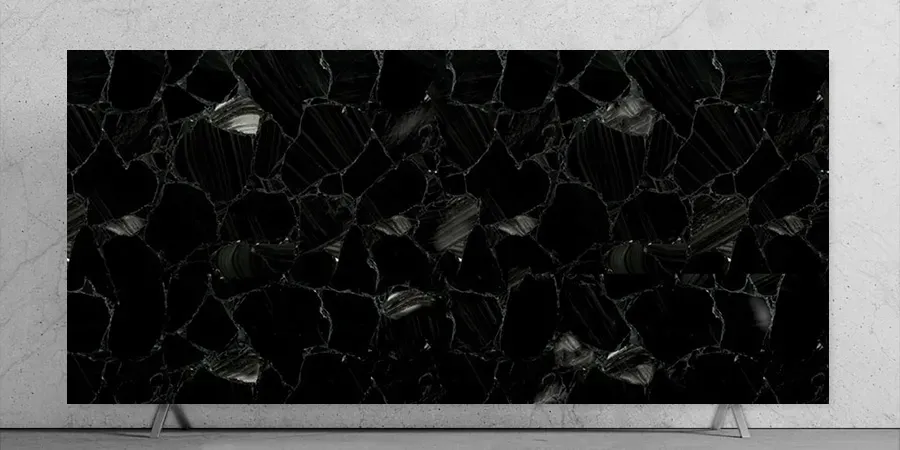Table of Contents
Ever walk into a room and feel... underwhelmed? Like it’s perfectly fine, but it lacks that certain spark, that focal point that grabs your eye and says, " this space has personality." If you're nodding along, you're not alone. Many homes have rooms that just need a little something extra to go from functional to fantastic. That's where the power of unique accent wall designs comes in.
The Point of Impact: Why Unique Accent Walls Matter

The Point of Impact: Why Unique Accent Walls Matter
Defining Your Space with Flair
So, you've got a room, right? Maybe it's your living room, bedroom, or even that awkward hallway space. It's functional, sure, but does it tell a story? Does it have a focal point that instantly draws the eye and makes you think, "Ah, this is interesting"? If not, that's where unique accent wall designs come into play. Think of it as giving one wall a starring role. Instead of all four walls blending into the background, one gets to stand out, demanding attention and anchoring the entire room's design.
This isn't just about slapping on a different color of paint, though that's a classic starting point. We're talking texture, pattern, material. A wall clad in reclaimed wood can bring warmth and a rustic vibe. Geometric wallpaper can add a modern, graphic punch. Even strategically placed molding can create depth and architectural interest where none existed before. It’s about intentional design, making a deliberate choice to elevate one part of the room to influence the whole.
More Than Just Pretty: The Psychology of Accent Walls
Beyond aesthetics, unique accent wall designs actually work on a psychological level. They guide your eye, telling you where to look and what's important in the room. Got a killer piece of art? Put it on an accent wall. Have a fireplace you want to highlight? Make the wall behind it the star. It's a subtle way to direct attention and curate the visual experience of your space. Plus, they can make a room feel larger or smaller, depending on the color and texture you choose.
Consider a long, narrow room. Painting the far wall a darker color or adding a bold pattern can visually shorten the space, making it feel more balanced. Conversely, a light-colored or textured accent wall in a small room can add depth without overwhelming the space. It’s a design tool, plain and simple, and when used effectively, it can completely change how a room feels and functions. And let's be honest, it's a lot less commitment (and usually less expensive) than redoing the entire room.
So, what's the biggest design challenge you think a unique accent wall could solve in your home?
Materials and Methods for Truly Unique Accent Wall Designs

Materials and Methods for Truly Unique Accent Wall Designs
Going Beyond the Paint Can
Alright, so you're sold on the idea of a unique accent wall. Great! Now, how do you actually make it happen? The first step is thinking outside the paint aisle. Don't get me wrong, a bold color is a fantastic starting point, but the world of unique accent wall designs opens up when you consider texture and dimension. Have you thought about wallpaper? Not your grandma's floral stuff (unless that's your vibe, no judgment!), but modern geometric patterns, large-scale murals, or even textured options that mimic grasscloth or linen. It's like putting on a statement outfit for your wall.
Then there are materials like wood paneling – shiplap if you're feeling farmhouse-y, clean-lined slats for a modern look, or even salvaged wood for serious character. Tile isn't just for bathrooms and kitchens anymore; imagine a wall of beautiful zellige tiles or even some cool patterned cement tiles in a living room or entryway. Fabric panels, exposed brick (if you're lucky enough to have it hidden), or even concrete finishes can add incredible depth and a tactile quality that paint just can't match. The key is to pick a material that complements your existing furniture and overall room style, but still feels distinct enough to be an accent.
Techniques That Make a Statement
let's say you're sticking with paint, but you still want something unique. There are techniques beyond a single flat color. Think about applying paint in a pattern – stripes, chevrons, or even a freehand mural if you're artistically inclined. A limewash or plaster effect can give a wall a beautiful, subtle texture and depth that feels ancient and modern all at once. Stenciling is another option, allowing you to repeat a design across the wall for a wallpaper-like effect without the sticky mess.
Molding isn't just for trim work either. You can create geometric patterns on a flat wall using different types of molding, painting the whole thing one color for a subtle, architectural look, or painting the panels different colors for something bolder. Peel-and-stick wallpaper and wall decals have also come a long way, offering temporary and easy ways to add pattern and personality. The method you choose often depends on your budget, your DIY comfort level, and the overall impact you want to make with your unique accent wall designs. Don't be afraid to experiment on a small scale first if you're unsure.
- Consider the room's function and light when choosing materials.
- Test paint colors or material samples in the actual space before committing.
- Ensure the accent wall material or technique complements existing furniture and decor.
- Measure twice, cut once (especially with paneling or wallpaper).
- Prep the wall properly – clean, smooth, and primed is key for a good finish.
Examples: RealWorld Unique Accent Wall Designs to Inspire You

Examples: RealWorld Unique Accent Wall Designs to Inspire You
Seeing is Believing: Unique Materials in Action
enough theory. Let's look at some actual unique accent wall designs that people have pulled off. Forget the beige box blues. Imagine walking into a dining room where one wall is clad in beautiful, dark walnut panels arranged in a chevron pattern. Instant sophistication, right? Or a kid's room with a magnetic paint accent wall covered in their ever-changing artwork – functional and fun. I saw a home office once where the owner used old maps to create a feature wall, decoupage style. It was quirky, personal, and definitely not something you see every day.
Another cool example? Using slatted wood panels to create a modern, textured look behind a bed. It adds architectural interest and makes the headboard almost unnecessary. Or what about using wallpaper, but not just on a flat wall? I've seen people apply bold floral wallpaper inside the panels of wainscoting for a surprising pop of pattern and color. It's about taking a material and using it in a way that feels fresh and unexpected. These aren't just walls; they're installations.
Techniques That Turn Heads
It's not always about the material itself, but how you use it. Consider painted geometric patterns. Someone might tape off large, intersecting triangles on a wall and paint each section a different, but coordinating, color. It’s graphic, modern, and relatively low-cost compared to some material options. Or think about venetian plaster – it gives a wall a subtle, marble-like finish with incredible depth and movement. It’s definitely a step up from a flat paint job and adds a touch of old-world elegance.
I even saw a clever use of rope once, stretched taut and layered on a wall to create a linear, textured effect. It sounded weird on paper, but in person, it was minimalist and striking. The point is, unique accent wall designs often come from playing with application methods or combining materials in unexpected ways. Don't feel limited by traditional uses of paint or wallpaper. Get a little weird with it; sometimes the best results come from the least conventional ideas.
What kind of texture or pattern are you brave enough to try on your wall?
- Reclaimed wood paneling for rustic charm.
- Bold geometric wallpaper for a modern statement.
- Magnetic or chalkboard paint for interactive fun.
- Slatted wood for contemporary texture.
- Tile (beyond the usual spots) for durability and style.
- Painted geometric patterns for graphic impact.
- Venetian plaster for subtle, elegant texture.
- Creative use of unconventional materials like rope or maps.
DIY Your Way to a Unique Accent Wall

DIY Your Way to a Unique Accent Wall
Planning Your DIY Unique Accent Wall Designs
Alright, so you're feeling brave and want to tackle a unique accent wall designs project yourself. Good for you. It's not rocket science, but it does require a bit of thought before you just start slapping paint or glue on a wall. First, pick your wall. Usually, it’s the wall you see first when you walk in, or the one behind a major piece of furniture like your sofa or bed. Consider the light in the room throughout the day; a textured wall will look different in bright sun versus evening shadows. Next, nail down your material or technique. Are you going for bold paint, intricate stenciling, wood panels, or maybe peel-and-stick wallpaper? Each requires different tools and prep work.
Don't skip the preparation phase. Seriously. Trying to apply wallpaper over bumpy, unprimed walls is a recipe for disaster and tears. Clean the wall thoroughly. Patch any holes or cracks. Sand down imperfections. If you’re painting a dark color or using wallpaper, priming is usually non-negotiable. It helps the new layer adhere properly and gives you a smooth, consistent finish. Measure your wall precisely. Draw out your design on paper first, especially if you’re doing something complex like geometric patterns or paneling. Figure out exactly how much material you'll need, adding a little extra for mistakes (because, let's be real, they happen). A little upfront planning saves a lot of headaches (and trips back to the hardware store) later.
Executing Your Vision (Without Losing Your Mind)
Now for the fun part, or the frustrating part, depending on your skill level and patience. If you're painting, tape off your edges meticulously. Use good quality painter's tape – the cheap stuff bleeds, and nobody wants fuzzy lines on their unique accent wall designs. Apply thin, even coats of paint, letting each dry completely before the next. Resist the urge to rush it. For wallpaper, read the instructions carefully. Some require pasting the paper, others the wall, and peel-and-stick is a different beast entirely. Have the right tools: a smoothing tool, a utility knife with fresh blades, and a level are your best friends.
Working with materials like wood panels or molding requires a bit more precision. Measure and cut carefully. Use a level constantly to make sure everything is straight. A nail gun makes life infinitely easier than hammering by hand, but follow safety precautions. Don't be afraid to ask for help if you're installing something heavy or awkward. Remember, the goal is a finished product that looks intentional and professional, not like you wrestled a lumberyard in your living room. Take breaks, step back to assess your progress, and if something isn't working, figure out why before you keep going down the wrong path. And hey, if it's not perfect, call it "character."
What's the most intimidating part of a DIY wall project for you?
- Gather all necessary tools and materials before starting.
- Prep the wall surface thoroughly: clean, patch, sand, and prime.
- Measure and plan your design on paper first.
- Use quality painter's tape for clean paint lines.
- Read and follow instructions for wallpaper or material installation precisely.
- Use a level frequently to ensure straight lines and placement.
- Don't be afraid to troubleshoot or adjust your plan as you go.
Your Wall's Moment in the Spotlight
So there you have it. Turning a plain wall into a focal point isn't rocket science, but it does require a bit more thought than just slapping on a coat of bright paint. We've looked at why these walls command attention, touched on materials that go way beyond the usual suspects, seen some examples that actually make a difference, and considered the DIY angle. The goal isn't just a pretty picture for Instagram; it's about creating a space that feels intentional, lived-in, and reflects something about the people who inhabit it. A unique accent wall, done right, pulls a room together and gives it a sense of purpose it might have been missing. It’s your chance to make one part of your home genuinely stand out.
